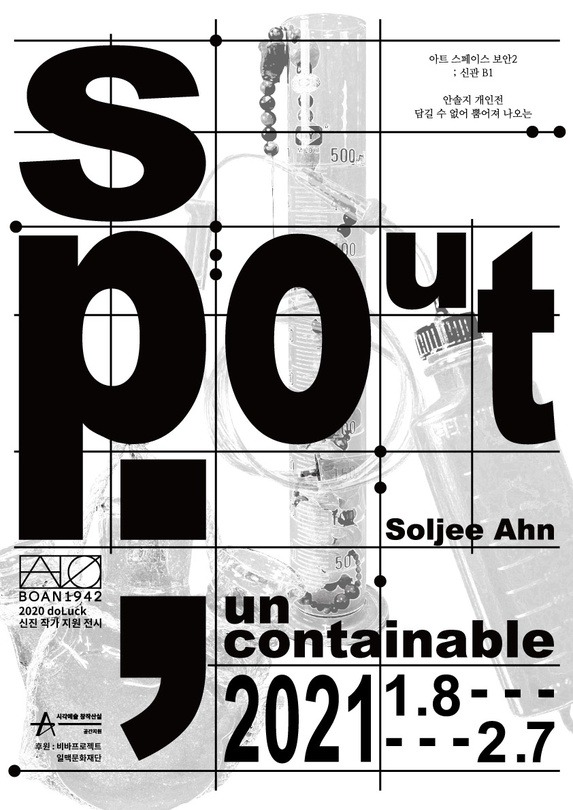
| Period| | 2021.01.08 - 2021.02.07 |
|---|---|
| Operating hours| | From Tuesday To sunday 12:00 ~ 18:00 |
| Space| | Artspace Boan 1942(Boan1942)/Seoul |
| Address| | 33 Hyojaro, Jongrogu, Seoul, SouthKorea |
| Closed| | Monday |
| Price| | Free |
| Phone| | 02-720-8409 |
| Web site| | 홈페이지 바로가기 |
| Artist| |
안솔지
|
정보수정요청



|
|
Exhibition Information
Body is given different meanings and symbols depending on the numerous situations and contexts that human beings encounter. For example, biologically, it can be an object that distinguishes humans from other animals, socially it can be the basic unit of state or any organization, and economically, it can be the main body and object of consumption and production. The body expressed by Ahn Soljee also covers a wide range, especially in this exhibition, the subject, which is the author's own body and the body of a batter, becomes a constant experiment. The memory of the "body" that the writer experienced with his skin since he was young has had a profound impact on the writer's worldview. The environment surrounding the artist is replaced by a "laboratory" in this work, and the experiments in it symbolically show the external gaze the body faces, the classification and evaluation made by convenience, and the wounds and reactions that occur in the process. The laboratory is divided into three main sections, consisting of the writer's "1. Raised things 2. Visible things 3. Spit things out." The plants in "The Things that the author used to grow" are collected from different environments. Plants collected and classified by arbitrary criteria are exposed to unknown external experiments and placed at a crossroads of survival. Objects placed in '2. Things I Used to See' suggest physical characteristics of a particular race. The colors and metaphors of objects that symbolize skin, eyes, and hair can be inferred as Asian women. In "3.Strongs," the relationship between food that keeps the body and secretion from the body is visualized as an experiment that blends two objects. A normal relationship would involve the body getting nutrients from food intake, but in this laboratory, substances produced by the body are immediately mixed into parts of the food and as substances versus substances, resulting in a different chemical reaction from normal physical reactions. The scene of the three experiments generally has an indifferent and cold atmosphere. The collected plants are raised, but not cared for, and the body objects are fragmented and laid down, and food and body secretions are intuitively mixed without delicate consideration or prediction. This is linked to various situations that the "body" can encounter. A modern person's life, constantly observed and evaluated through race or body shape and appearance, and continuously exposed to numerous foods, drugs, chemicals, etc. without sufficient information. Like laboratory experiments, our bodies are often forced to grow, be seen, and exhaled. In the process, the screams of the body 'cannot be captured, spewed out' resonate in the laboratory. However, it is more of an expression of strong will than a passive expression of pain. Author Ahn Sol-ji says it is an experimental process to clearly distinguish the internal and external factors surrounding the body and to actively digest the internal and external factors, which were no longer "stopped" by the outside standard. Listening to the story of 'body' that resonates visually along the writer's gaze, it is both my story and yours. The moment you face the points of pain and agony that are inevitable if you have a body, the body's presence that you have forgotten will suddenly come in a different sense. If we contemplate and imagine how the end will result, beyond the limitations on the body, we believe that Ahn Soljee's efforts to understand and appreciate the emotions and messages he wanted to express through this exhibition will help us understand and appreciate more.
